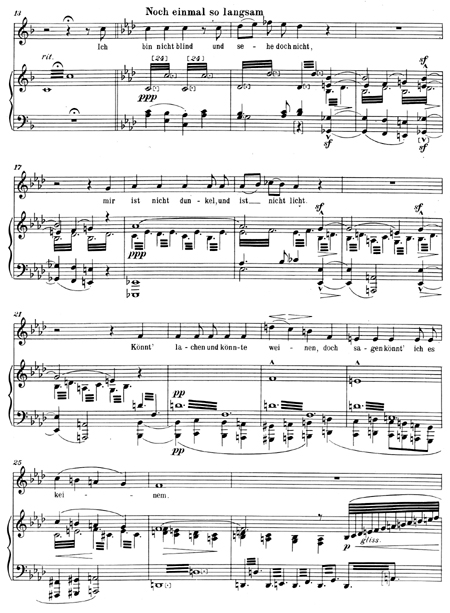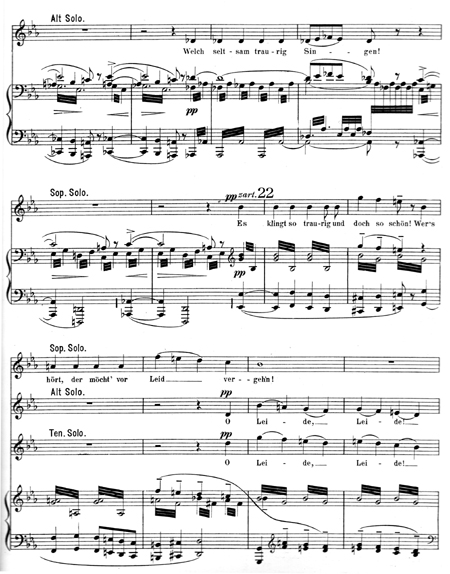
![Main heading: The Music of Gustav Mahler: A Catalogue of Manuscript and Printed Sources [rule] Paul Banks](../../images/General%20Heading3.jpg)
|
|
|||||||||||||||||||||||||||||||||||||||||||||||||||||||||||||||||||
|
|
|||||||||||||||||||||||||||||||||||||||||||||||||||||||||||||||||||
|
|
|||||||||||||||||||||||||||||||||||||||||||||||||||||||||||||||||||
|
|
|||||||||||||||||||||||||||||||||||||||||||||||||||||||||||||||||||
|
|
|||||||||||||||||||||||||||||||||||||||||||||||||||||||||||||||||||
|
|
|||||||||||||||||||||||||||||||||||||||||||||||||||||||||||||||||||
|
|
|||||||||||||||||||||||||||||||||||||||||||||||||||||||||||||||||||
|
|
|
||||||||||||||||||||||||||||||||||||||||||||||||||||||||||||||||||
|
|
|||||||||||||||||||||||||||||||||||||||||||||||||||||||||||||||||||
|
|
|||||||||||||||||||||||||||||||||||||||||||||||||||||||||||||||||||
|
|
|
||||||||||||||||||||||||||||||||||||||||||||||||||||||||||||||||||
|
|
|||||||||||||||||||||||||||||||||||||||||||||||||||||||||||||||||||
|
|
|||||||||||||||||||||||||||||||||||||||||||||||||||||||||||||||||||
|
|
|||||||||||||||||||||||||||||||||||||||||||||||||||||||||||||||||||
|
Index of Works |
|
||||||||||||||||||||||||||||||||||||||||||||||||||||||||||||||||||
|
Site Map |
|
||||||||||||||||||||||||||||||||||||||||||||||||||||||||||||||||||
|
|
|||||||||||||||||||||||||||||||||||||||||||||||||||||||||||||||||||
|
|
|
||||||||||||||||||||||||||||||||||||||||||||||||||||||||||||||||||
|
|
|||||||||||||||||||||||||||||||||||||||||||||||||||||||||||||||||||
|
|
|
||||||||||||||||||||||||||||||||||||||||||||||||||||||||||||||||||
|
|
|
||||||||||||||||||||||||||||||||||||||||||||||||||||||||||||||||||
|
|||||||||||||||||||||||||||||||||||||||||||||||||||||||||||||||||||
Lieder für Tenorstimme
| 5 Lieder für Tenorstimme | |||||||||||||||||||||||||||||||||||||||||
| Im Lenz: 19 Februar 1880; Winterlied: 27 Februar 1880; Maitanz im Grünen: 5 März 1880 | |||||||||||||||||||||||||||||||||||||||||
| The voice ranges at notated pitch use Helmholtz notation and show pitches for which Mahler provides an ossia in parentheses; the timings are derived from PFMD2. | |||||||||||||||||||||||||||||||||||||||||
|
|||||||||||||||||||||||||||||||||||||||||
| Josephinen zueiggnet | |||||||||||||||||||||||||||||||||||||||||
| The manuscript contains no attributions for the texts, which were probably by the composer | |||||||||||||||||||||||||||||||||||||||||
| Tenor and Piano | |||||||||||||||||||||||||||||||||||||||||
| Autograph fair copy (CDN-Lu Mahler-Rosé Collection, OS-MD-684) | |||||||||||||||||||||||||||||||||||||||||
| First published in SWXIII/5 (1990; see below) | |||||||||||||||||||||||||||||||||||||||||
| Performance history | |||||||||||||||||||||||||||||||||||||||||
|
The first confirmed performance of the three completed songs appears to have been broadcast in Radio Brünn on 30 September 1934; they were sung by Zdeněk Knittl, accompanied by Alfred Rosé (DM1, 119). |
|||||||||||||||||||||||||||||||||||||||||
| Chronology | |||||||||||||||||||||||||||||||||||||||||
|
|||||||||||||||||||||||||||||||||||||||||
|
The dedicatee of these songs - named simply ‘Josephine' on the title page - was first identified in 1921 in an article by Dr Rudolf Stephan Hoffmann (RSHUJM). As he makes clear, he was given access to the manuscript of the collection by its owner, Frau Justine Rosé, Mahler's sister, and it appears that in thanks for this he sent her a proof copy of the article (CDN-Lu Mahler-Rose Collection OS-MD-698). It was presumably Justine who provided the little information he was able to divulge about 'Josephine':
Mahler had taught the sisters Josefa and Anna Poisl piano in the summer of 1879, and from this his infatuation grew (HLG1a, 140ff.). Another reference to this relationship can be found in Natalie Bauer-Lechner's important letter to Hans Riel, written in February 1917 (transcription and translation from NBLMW, 21–22):¹
Despite the later, ostensibly rather patronising and patriarchal recollections that Natalie reports, it is possible that for Mahler, at least, the love affair was serious: he kept a collection of letters and other documents connected with it for the rest of his life. (see HLG1a, 139–140). However, Frl. Poisl's father, Josef, did not consider Mahler a suitable suitor for his daughter, and in June wrote to Mahler forbidding him to write to her. Shortly afterwards she married Julius Wallner (b.1852), a teacher at the Staatsgymnasium in Iglau, who went on to have a successful professional career, and together they had at least three children.² By the late 1880s he had moved to Laibach where he was professor at the Obergymnasium until the announcement on 13 July 1894 that he would return to Iglau to take over as Director of the Staatsgymnasium; five years later a further promotion beckoned when, in September 1899 he was appointed Director of the German-language Gymnasium in Brünn. Alongside his professional work Wallner was also an amateur historian who undertook research in a number of areas, including the early history of education in Iglau and 17th and 18th-century painters and sculptors in Laibach.³ From 1887/8 he was for many years a corresponding member of the Centralkommission für Kunst- und historische Denkmale and prepared at least two reports on archives and monastic buildings in Croatia published by the Commission. After his retirement (1906, with the honorary title of Regierungsrat) Wallner moved to Graz and died there, in his 63rd year, on 18 March 1914. Unfortunately recent research has not shed any further light on Josephine herself, or established the date of her death. However there is some evidence that might offer clues about her later life. In August 1896 Julius and his (unnamed) wife registered as guests at the Gasthof zum Wilden Mann at Bad Ischl, an indication that they had achieved at least modest middle-class affluence; at the time Mahler was 22 kilometres away, at Steinbach am Attersee where he had completed the draft of the Third Symphony earlier in the summer. Six years later, in August 1902, Wallner again stayed in Ischl, this time at the Hôtel dem schwarzen Adler, but not with his wife, only one of his sons. There could be have been many reasons for Josephine's absence, but, particularly in light of Hoffmann's reference, it seems possible that she had died in the intervening period: she was not listed with Wallner for any of his subsequent summer visits to resorts. In the light of recent research it is striking how the circumstances of the composition of these songs parallel that of a group of five songs composed by Rudolf Krzyzanowski at about the same time and were for a time erroneously attributed to Mahler. Franz Willnauer's suggestion that the Frühlingsboten (Spring greetings) that Mahler told Josephine he was sending her in a letter dated 18 March 1880, were in fact the three completed songs of the collection, is not wholly implausible. However, if the sole surviving manuscript was that gift, how did it end up in Justine's possession? If it was not, then there must have been another autograph manuscript. Jeremy Barham has conjectured that the two other poems Mahler appears to have written in early 1880 – Vergessene Liebe and „Kam ein Sonnenstrahl‟ (see HLG1, 824–26 and the transcriptions included with the texts of the first three songs) – were intended for the projected fourth and fifth songs but were never composed because of the abrupt ending of his relationship with Josephine (JBJE, 56). Vocal Range Taken together the songs
demand a tenor with a wide compass: (at sounding pitch) from A
('Maitanz im Grünen') to b Related Work ‘Im Lenz’ shares an extended passage with Das klagende Lied: bb. 14–27 of the song make their first appearance (a fifth lower in pitch) in bb. 302–14 (1880)/bb. 294–307 (1902) of Der Spielmann, and is heard again in bb. 202–207 (1880)/bb. 200–205 (1902) of Hochzeitsstück.
The autograph short score of this movement (Das klagende Lied, SS2) is dated 21 March 1880, so it seems likely that the passage was first conceived in the context of the song. The last completed song, 'Maitanz im Grünen', was subsequently transposed upwards and revised to become 'Hans und Grete', the third song in volume I of the Lieder und Gesänge, published in 1892. Because the original song had an usually wide vocal range – A-a' (sounding pitch) – Mahler had to modify the higher passages when transposing the song. SWXIII/5: Gustav Mahler, Verscheidene Lieder für eine Singstimme mit Klavier, Sämtliche Werke, Kritische Gesamtausgabe, Band XIII Teilband 5, ed. Zoltan Roman ([S.l.]: Schott, 1990) |
|||||||||||||||||||||||||||||||||||||||||
| PRML, 49–51; JBJE, 56–8; HLG1a, 139ff. | |||||||||||||||||||||||||||||||||||||||||

![]() https://orcid.org/0000-0002-2258-0267
©
2007-21 Paul Banks | This page was lasted edited on
17 February 2022
https://orcid.org/0000-0002-2258-0267
©
2007-21 Paul Banks | This page was lasted edited on
17 February 2022


